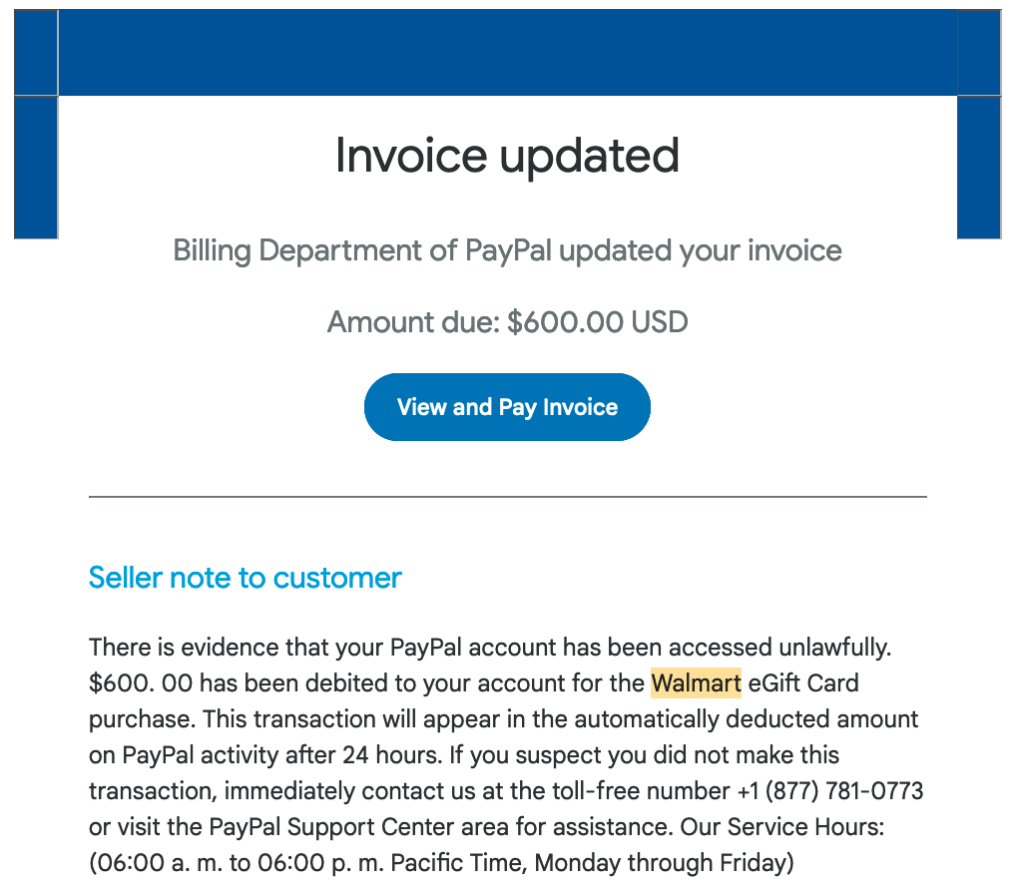There’s a new phishing scam making the rounds. I’ve received examples of this one twice myself over the last week, and since it’s a lot more sophisticated and polished than the average email phishing scam, I think it’s worth taking a look at.
Scammers are using invoices sent through PayPal.com to trick recipients into calling a number to dispute a pending charge. The missives — which come from Paypal.com and include a link at Paypal.com that displays an invoice for the supposed transaction — state that the user’s account is about to be charged hundreds of dollars. Recipients who call the supplied toll-free number to contest the transaction are soon asked to download software that lets the scammers assume remote control over their computer.
KrebsOnSecurity recently heard from a reader who received an email from paypal.com that he immediately suspected was phony. The message’s subject read, “Billing Department of PayPal updated your invoice.”
While the phishing message attached to the invoice is somewhat awkwardly worded, there are many convincing aspects of this hybrid scam. For starters, all of the links in the email lead to paypal.com. Hovering over the “View and Pay Invoice” button shows the button indeed wants to load a link at paypal.com, and clicking that link indeed brings up an active invoice at paypal.com.
Also, the email headers in the phishing message (PDF) show that it passed all email validation checks as being sent by PayPal, and that it was sent through an Internet address assigned to PayPal.
Both the email and the invoice state that “there is evidence that your PayPal account has been accessed unlawfully.” The message continues:
“$600.00 has been debited to your account for the Walmart Gift Card purchase. This transaction will appear in the automatically deducted amount on PayPal activity after 24 hours. If you suspect you did not make this transaction, immediately contact us at the toll-free number….”
As always, look at every message from any financial institution as a potential phishing attack, so never click on links sent in email. Use your regular browser login to see if it’s a real issue, and if it’s a phishing scam, be sure to report the email in question.
Let’s be careful out there…
Tags: Brian Krebs, Crime, fraud, phishing, scam, technology
